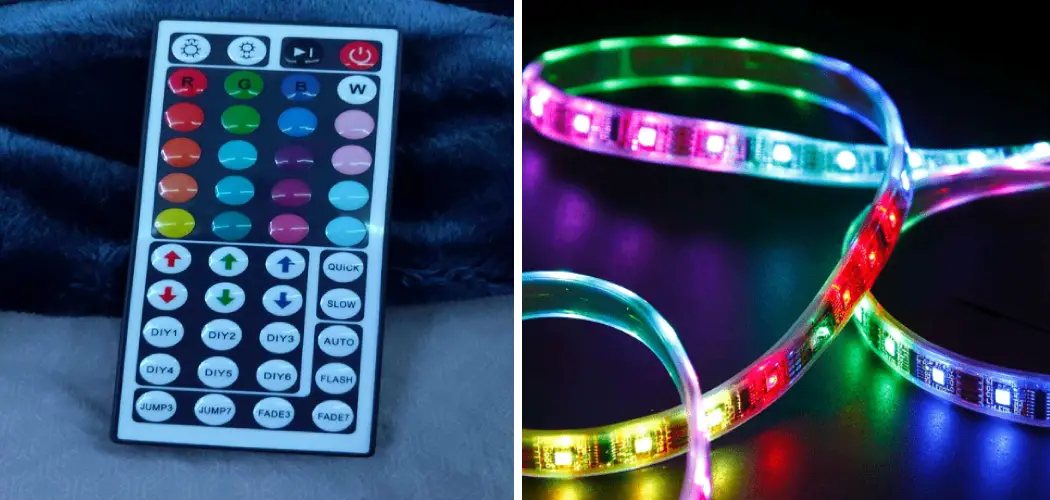Most modern LED lights can be controlled with a remote control, making it easy to adjust the brightness and color of your lights. However, there may be instances when you misplace or lose the remote, making it difficult to turn on your LED lights.
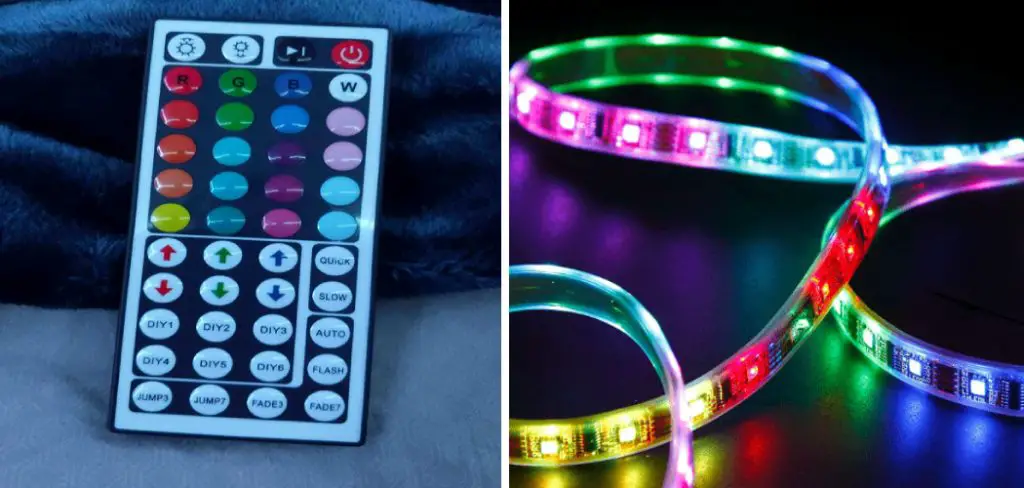
But don’t worry; there are still ways to turn on your LED lights without the remote. In this guide on how to turn on your LED lights without the remote, we will explore some of the options available to you.
Necessary Items
Before we dive into the methods, let’s first gather the necessary items that you will need:
- LED Lights: These can be in the form of a light strip, bulb, or any other type of LED light.
- Power Source: This can be an outlet or a power bank, depending on the type of LED lights you have.
- Smartphone or Tablet: You will need one of these devices to use as a controller.
- LED Light Controller: This can be in the form of an app or a physical device that connects to your LED lights and allows you to control them.
Now that you have all the necessary items let’s look at some ways to turn on your LED lights without the remote.
8 Things to Know Before You Start
1) Check the power source
Before attempting any of the methods, make sure that your LED lights are connected to a power source and turned on. If they are not receiving any power, then none of the methods will work. But if your lights are already connected to a power source, then continue to the next step.
2) Check for alternative remotes
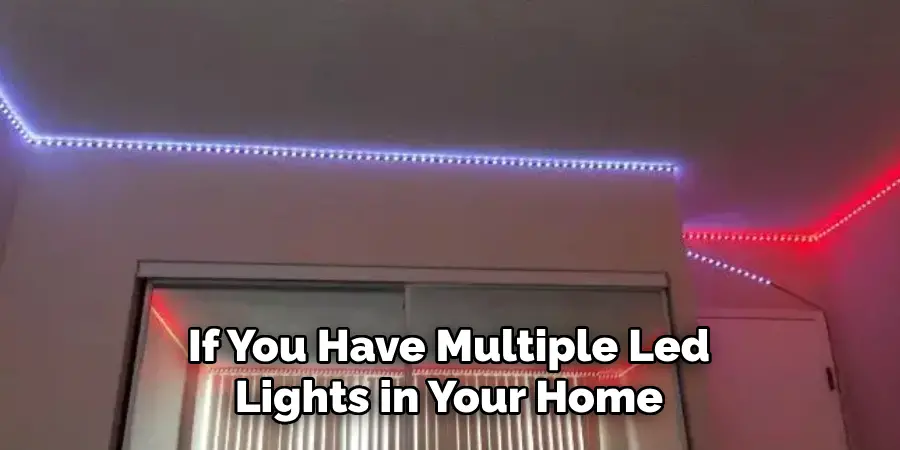
If you have multiple LED lights in your home, check if any of the other remotes can control the specific set of lights that you want to turn on. Sometimes, different sets of LED lights come with the same remote and can be used interchangeably.
3) Download the LED light controller app
If your LED lights have a compatible app that allows you to control them, then download it onto your smartphone or tablet. This will act as your new remote and give you access to all the same features as the physical remote.
4) Check for physical controllers
Some LED lights come with a physical controller that can be used to turn them on and adjust their settings. This controller usually has buttons or a dial to control the brightness and color of your lights.
5) Check for voice control options
If you have a smart home system, check if your LED lights are compatible with voice control. This will allow you to use commands like “turn on the lights” or “change the color to blue” to control your lights without needing a remote.
6) Use a universal remote
If you have a universal remote, you can program it to work with your LED lights. This will give you an alternative controller that can be used in case you lose or misplace the original remote. As a backup, you can also store the remote codes on your smartphone or tablet.
7) Use a timer or schedule feature
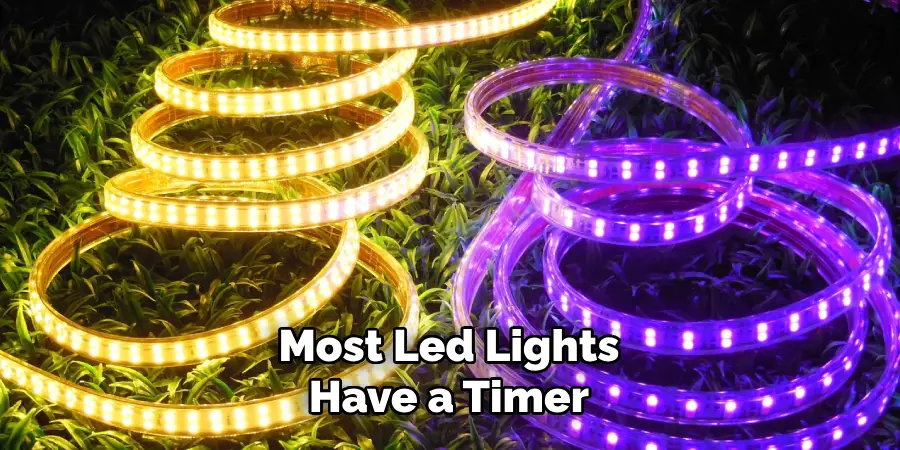
Most LED lights have a timer or schedule feature that allows you to set specific times for them to turn on and off. If you usually use your lights at the same time every day, this can be an easy solution to turn them on without a remote.
8) Contact the manufacturer
If none of the above methods work for your specific LED lights, then you may need to contact the manufacturer for assistance. They can provide you with instructions on how to turn on your lights without a remote or suggest alternative solutions.
Losing or misplacing the remote control for your LED lights can be frustrating, but there are still ways to turn them on without it. By following the steps and tips outlined in this guide, you can easily control your LED lights using alternative methods.
Make sure to always keep a backup plan in case you encounter any issues with your original remote. Now go enjoy your beautifully lit space! Happy lighting!
12 Methods on How to Turn on Your LED Lights Without the Remote
Method 1: Using Your Smartphone or Tablet as a Controller
If your LED lights have a compatible app, you can use your smartphone or tablet as a controller. Simply download the app onto your device and follow the instructions to connect it to your LED lights. Once connected, you will be able to control your lights using the app.
Method 2: Using a Physical Controller
Some LED lights come with a physical controller that can be used to turn them on and adjust their settings. This controller usually has buttons or a dial to control the brightness and color of your lights.
Method 3: Using Voice Control
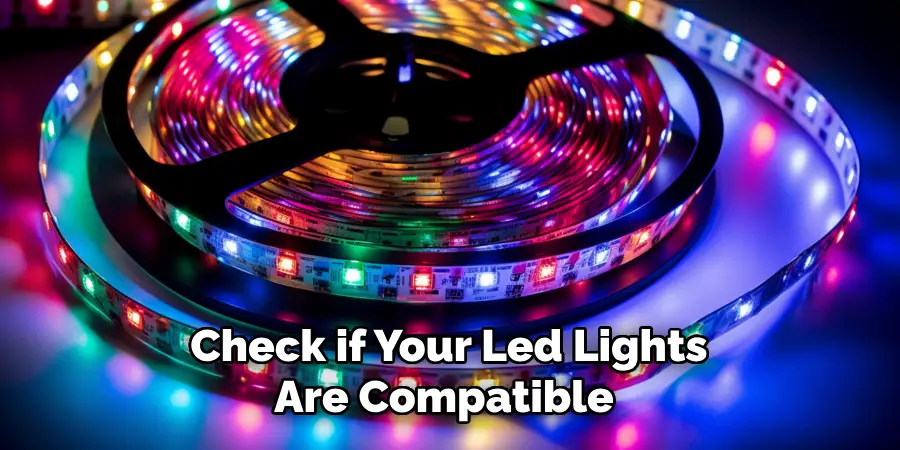
If you have a smart home system, check if your LED lights are compatible with voice control. This will allow you to use commands like “turn on the lights” or “change the color to blue” to control your lights without needing a remote.
Method 4: Using a Universal Remote
If you have a universal remote, you can program it to work with your LED lights. This will give you an alternative controller that can be used in case you lose or misplace the original remote. As a backup, you can also store the remote codes on your smartphone or tablet.
Method 5: Using a Timer or Schedule Feature
Most LED lights have a timer or schedule feature that allows you to set specific times for them to turn on and off. If you usually use your lights at the same time every day, this can be an easy solution to turn them on without a remote.
Method 6: Switching Out the Battery
If your remote control is not working due to a dead battery, you can try switching it out with a new one. This may turn your LED lights back on and save you from having to find alternative methods. And remember to keep a backup battery on hand just in case.
Method 7: Checking for Alternative Remotes
If you have multiple LED lights in your home, check if any of the other remotes can control the specific set of lights that you want to turn on. Sometimes, different sets of LED lights come with the same remote and can be used interchangeably.
Method 8: Using a Bluetooth Connection
If your LED lights have a Bluetooth connection, you can pair them with your smartphone or tablet to control them without a remote. Make sure to follow the instructions for pairing and connecting the devices.
Method 9: Using an IR Extender
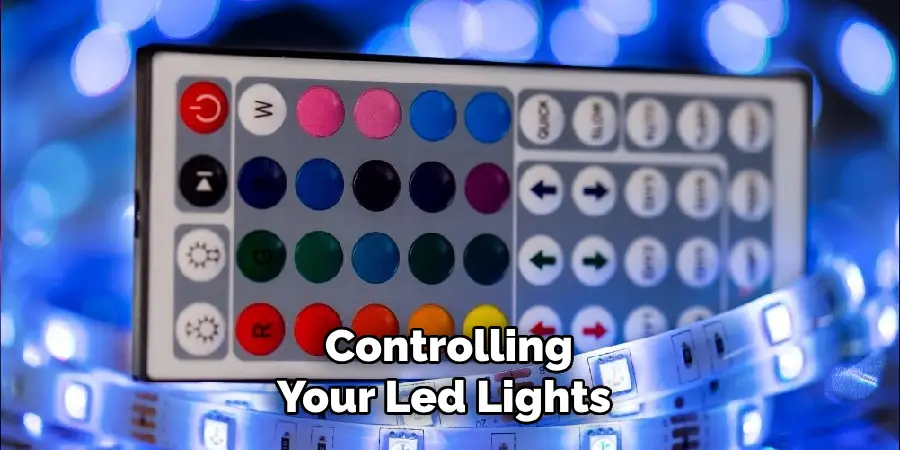
An IR extender is a device that allows you to control your electronic devices even if they are not in direct line of sight with the remote. This can be a useful tool for controlling your LED lights without needing the physical remote.
Method 10: Using a Smart Home Hub
If you have a smart home hub, you can connect your LED lights to it and control them using the hub’s app or voice control system. This will eliminate the need for a physical remote or app.
Method 11: Contacting the Manufacturer
If none of the above methods work for your specific LED lights, then you may need to contact the manufacturer for assistance. They can provide you with instructions on how to turn on your lights without a remote or suggest alternative solutions.
Method 12: Keeping Spare Remotes
To prevent future situations of not being able to turn on your LED lights without a remote, consider keeping spare remotes in safe and accessible places. This will ensure that you always have a backup in case you lose or misplace the original remote. Remember not to leave them near water sources as they are electronic devices and can be damaged easily by water. Happy lighting!
Losing or misplacing the remote control for your LED lights can be frustrating, but there are still ways to turn them on without it. By following the methods and tips on how to turn on your LED lights without the remote outlined in this guide, you can easily control your LED lights using alternative methods. Make sure to always keep a backup plan in case you encounter any issues with your original remote.
8 Things to Avoid When Using LED Lights
1) Submerging in Water
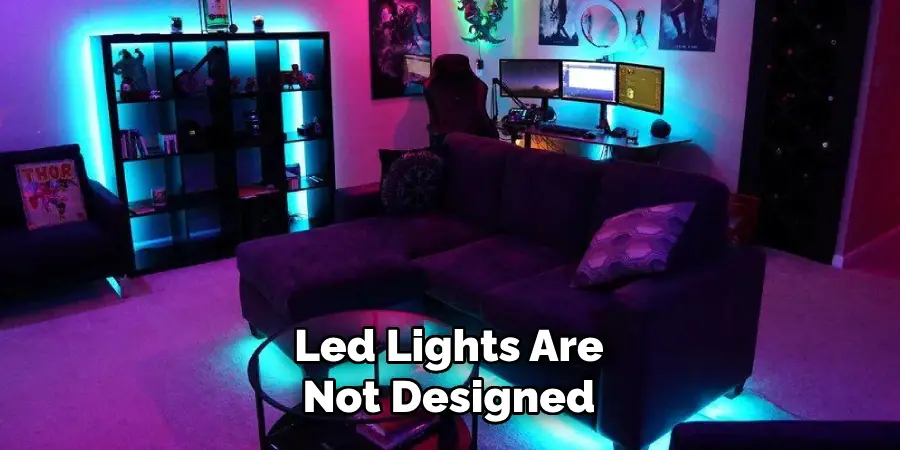
LED lights are not designed to be submerged in water, so avoid using them in places where they may come into contact with water. Water can damage the electronics and cause the lights to malfunction or stop working altogether.
2) Overloading the Power Source
Avoid connecting too many LED lights to one power source, as it can overload and damage both the lights and the power source. Make sure to read the recommended wattage for your LED lights and use a compatible power source.
3) Using Extreme Temperatures
Extreme temperatures, whether hot or cold, can affect the performance and lifespan of LED lights. Avoid using them in areas with temperatures outside their recommended range to ensure they work properly.
4) Placing Near Flammable Materials
LED lights produce very little heat compared to traditional light bulbs, but they can still generate enough heat to cause a fire if placed near flammable materials. Always make sure to keep them away from curtains, fabrics, and other flammable objects.
5) Overlooking Warnings and Instructions
When setting up and using LED lights, it is essential to follow the manufacturer’s instructions and warnings. Ignoring these guidelines can result in damage to the lights or potential safety hazards. As with any electronic device, it is essential to use them as directed for optimal performance.
6) Using Non-Compatible Dimmer Switches
Some LED lights are not compatible with traditional dimmer switches. Always check the specifications of your lights before using them with a dimmer switch to avoid damaging the lights or the switch.
7) Not Cleaning Regularly
LED lights can accumulate dust and dirt over time, which can affect their brightness and performance. Make sure to clean them regularly with a soft cloth to maintain their optimal functioning.
8) Disposing Improperly
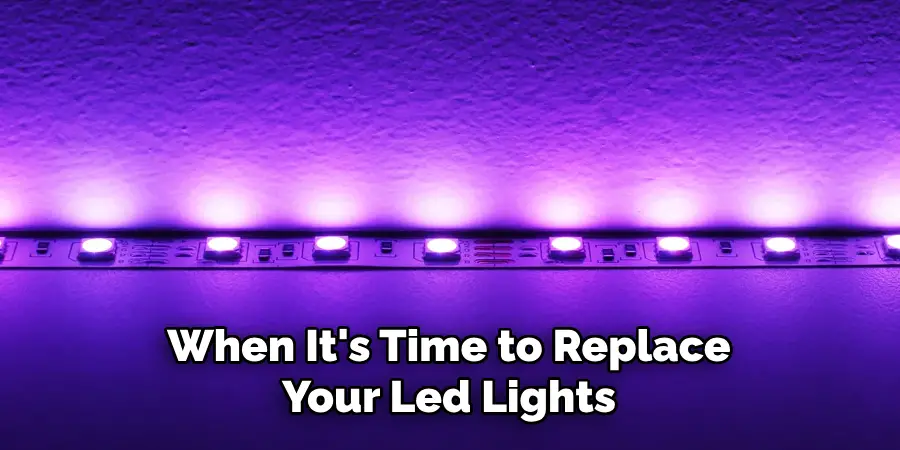
When it’s time to replace your LED lights, make sure to dispose of them properly according to local regulations. Some LED lights contain hazardous materials, so it is essential to handle them carefully and dispose of them responsibly.
By avoiding these common mistakes, you can ensure that your LED lights will work efficiently and safely for a long time.
LED lights have become a popular choice for their energy efficiency, durability, and versatility in design. While remote controls make it convenient to control them, it’s always good to know alternative methods in case the remote is lost or not working.
Remember also to follow safety precautions and avoid common mistakes when using LED lights. With proper care and maintenance, your LED lights can brighten up your home for many years to come.
8 Additional Tips for Using LED Lights
1) Use Energy-Efficient Bulbs
When purchasing LED lights, make sure to choose energy-efficient bulbs that consume less electricity. This will not only save you money on your utility bill but also reduce your environmental impact.
2) Use Appropriate Fixtures
LED lights come in various shapes and sizes, so make sure to use fixtures that are suitable for the specific bulb size and shape. This will ensure proper installation and avoid any safety hazards.
3) Use Motion Sensors
For outdoor LED lights, consider using motion sensors to automatically turn on the lights when someone approaches. This not only adds a layer of security but also saves energy by turning on the lights when needed.
4) Consider Color Temperature
LED lights come in different color temperatures, which can affect the ambiance and mood of a room. Consider using warmer colors for relaxing spaces and cooler colors for work or task-oriented areas.
5) Use Timers
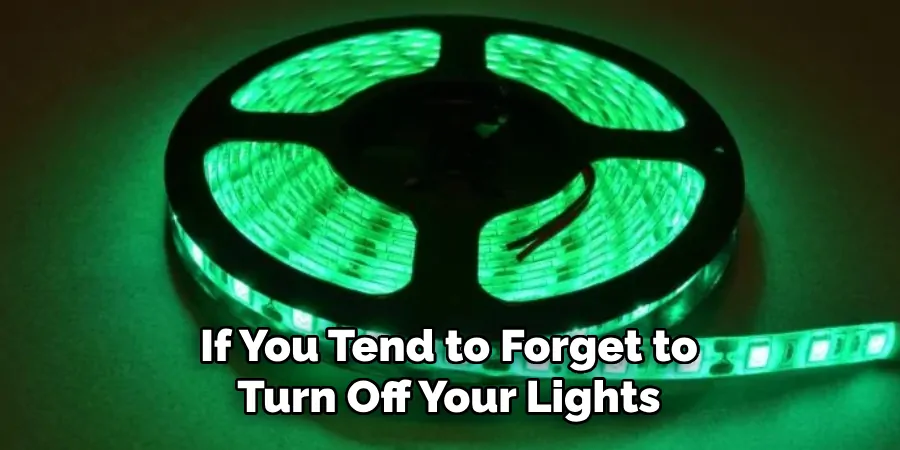
If you tend to forget to turn off your lights, consider using timers to automatically turn them off at a specific time. This not only saves energy but also extends the lifespan of your LED lights. While some LED lights come with built-in timers, you can also purchase external ones.
6) Opt for Smart Lighting
Smart lighting allows you to control your LED lights using a smartphone or voice commands. This convenient feature not only adds convenience but also allows for customizable settings and scheduling.
7) Don’t Mix Different Types of Bulbs
Avoid mixing different types of LED bulbs as they may have different color temperatures and wattages, resulting in inconsistent lighting. Stick to one type of bulb for a uniform look. This is especially important for decorative or accent lighting.
8) Keep Spare Batteries
If your LED lights use batteries, make sure to always keep spare ones on hand. This way, you can easily replace them when they run out and continue using your lights without interruption. It’s always a good idea to have extra batteries in case of emergencies as well.
LED lights offer many benefits as an energy-efficient and versatile lighting option. By following these tips on how to turn on your LED lights without the remote and avoiding common mistakes, you can ensure that your LED lights will continue to enhance your home for years to come.
Experiment with different colors and settings to create the perfect ambiance in any room. With proper care and usage, LED lights are a practical and stylish addition to any home.
Frequently Asked Questions
Can LED Lights Be Used Outdoors?
Yes, there are LED lights specifically designed for outdoor use. Just make sure to check the specifications and use appropriate fixtures to ensure safety.
Do LED Lights Produce Heat?
LED lights produce very little heat compared to traditional bulbs, making them a safer option. However, they can still generate enough heat to cause a fire if placed near flammable materials.
How Long Do LED Lights Last?
LED lights generally have a longer lifespan than traditional light bulbs, with some lasting up to 25 years, depending on usage.
Can LED Lights Be Dimmed?
Some LED lights are dimmable, but not all of them. Make sure to check the specifications before using them with a dimmer switch.
Are LED Lights More Expensive Than Traditional Bulbs?
While LED lights may have a higher upfront cost, they are more energy-efficient and last longer, resulting in cost savings in the long run. However, prices may vary depending on brand and features. So always make sure to do your research and choose the best option for your needs and budget.
Can LED Lights Be Used with a Generator?
Yes, LED lights can be used with a generator as long as it has enough wattage to power them. Make sure to check the wattage of your LED lights and the capacity of your generator before using them together. It’s always better to err on the side of caution and use a higher-wattage generator than necessary.
Are There Different Types of LED Lights?
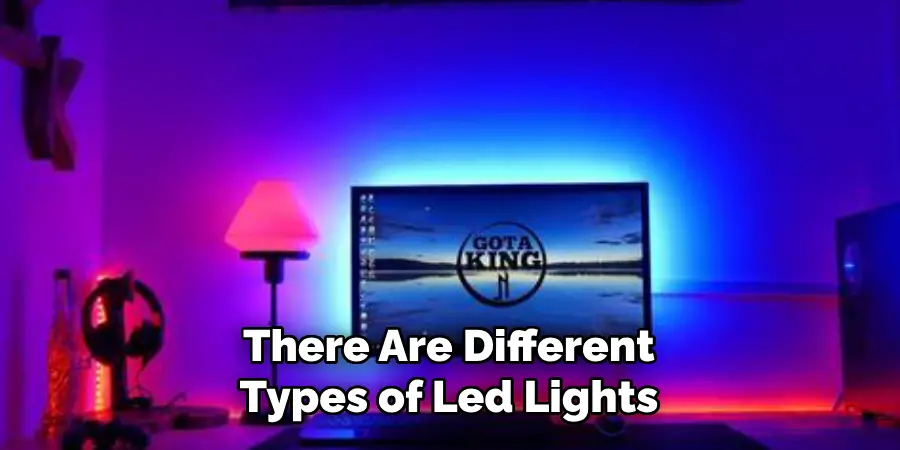
Yes, there are different types of LED lights, including bulbs, strips, panels, and tubes. Each type serves a specific purpose and has different features and specifications. Make sure to choose the right type for your needs.
Can LED Lights Cause Eye Damage?
There is no evidence that LED lights cause eye damage, but they can cause discomfort or strain if used improperly. Make sure to follow proper usage guidelines and take breaks to rest your eyes when using LED lights for extended periods. It’s also important to choose the right color temperature for your needs.
How Do I Dispose of LED Lights?
LED lights contain small amounts of hazardous materials, so it’s important to dispose of them properly. You can check with your local waste management agency for guidelines on how to recycle or dispose of them safely.
Conclusion
LED lights are a popular and energy-efficient lighting option that offers many benefits for homeowners. By following these tips on how to turn on your LED lights without the remote and guidelines, you can avoid common mistakes and get the most out of your LED lights.
Remember to choose high-quality bulbs, use appropriate fixtures, and consider additional features such as timers or motion sensors to enhance your experience. With proper care and usage, LED lights can provide long-lasting and stylish lighting for your home. So go ahead and make the switch to LED lights to enjoy all the benefits they have to offer!

